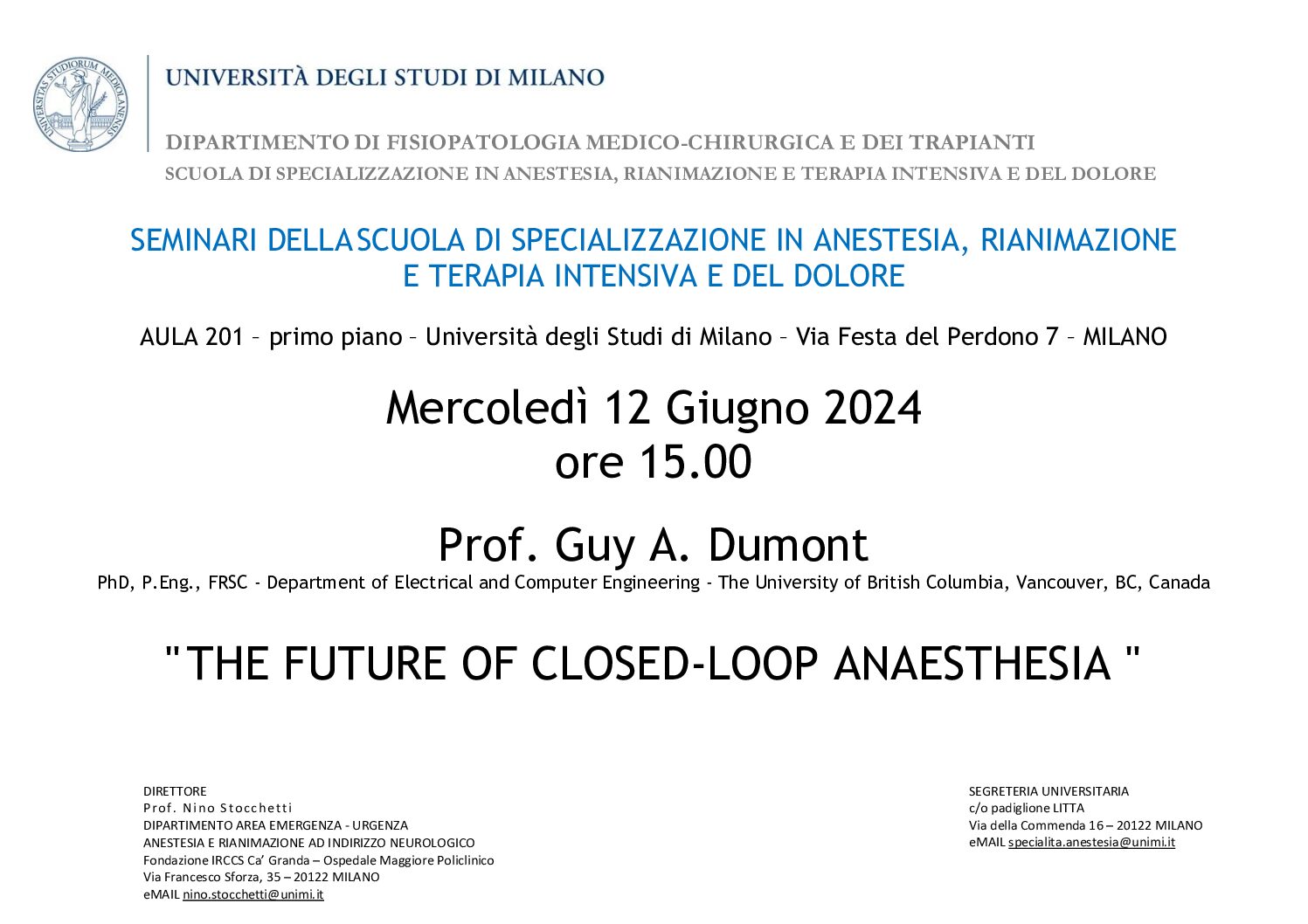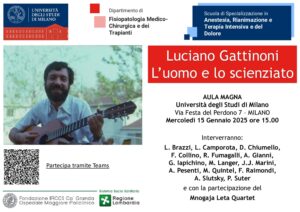SUMMARY
After the induction of general anesthesia, the anesthetic concentrations must be constantly adjusted to adapt the pharmacological effect to the intensity of surgical stimulation. This control function can be easily recognized as a feedback-control loop, suggesting the possibility of implementing algorithms to standardize and automate the drug titration process.
The first automated system for controlling the depth of general anesthesia was developed at the Maio Clinic in 1950 [J Am Med Assoc. 1950 Nov 25;144(13):1081-3]. The system adjusted the dose of anesthetic, Ether or Thiopental, based on the electrical output recorded on the electroencephalogram. Since then, many attempts have been made to automate the process of administering anesthetic drugs without any clinical systems available to date.
In this lecture, Prof Dumont will introduce the basic elements characterizing this kind of technology, stressing the limits of the algorithms developed so far and suggesting new perspectives for the future of closed-loop anesthesia.
LETTURE CONSIGLIATE
Closed-loop control of anesthesia: a primer for anesthesiologists. Dumont GA, Ansermino JM. Anesth Analg. 2013 Nov;117(5):1130-8. doi: 10.1213/ANE.0b013e3182973687. PMID: 23835456 Review.
Introduction to Automated Drug Delivery in Clinical Anesthesia Bibian S, Ries CR, Huzmezan M and Dumont G. European Journal of Control 2005; 11(6):535-557. DOI:10.3166/ejc.11.535-557
BIOSKETCH

Dr. Guy A. Dumont has been a Professor in the Electrical and Computer Engineering Department at the University of British Columbia since 1989, where he is also an Associate Member of the Department of Anesthesia, Pharmacology and Therapeutics.
Since 2003, he has been a Distinguished University Scholar and is currently a Peter Wall Distinguished University Scholar. A control and signal processing expert by training, he co-founded and co-directs with Mark Ansermino the Electrical and Computer Engineering in Medicine (ECEM) research group. For the last 10 years, he has collaborated with clinicians, health care researchers and life scientists in the area of physiological monitoring in the operating room, the intensive care unit.
Short BIBLIOGRAPHY
- Bibian, S., Ries, C. R., Huzmezan, M., & Dumont, G. (2005). Introduction to automated
drug delivery in clinical anesthesia. European Journal of Control, 11(6), 535-557. - Dumont GA, Ansermino JM. Closed-loop control of anesthesia: a primer for
anesthesiologists. Anesth Analg. 2013 Nov;117(5):1130-8. doi: 10.1213/
ANE.0b013e3182973687. PMID: 23835456. - West N, van Heusden K, Görges M, Brodie S, Rollinson A, Petersen CL, Dumont GA,
Ansermino JM, Merchant RN. Design and Evaluation of a Closed-Loop Anesthesia
System With Robust Control and Safety System. Anesth Analg. 2018
Oct;127(4):883-894. doi: 10.1213/ANE.0000000000002663. PMID: 29210791. - West N, Dumont GA, van Heusden K, Petersen CL, Khosravi S, Soltesz K, Umedaly A,
Reimer E, Ansermino JM. Robust closed-loop control of induction and maintenance of
propofol anesthesia in children. Paediatr Anaesth. 2013 Aug;23(8):712-9. doi:
10.1111/pan.12183. Epub 2013 May 13. PMID: 23668370. - Gilhuly TJ, Hutchings SR, Dumont GA, Macleod BA. Development and pilot testing of
the Neuromuscular Blockade Advisory System. Comput Methods Programs Biomed.
2008 Feb;89(2):179-88. doi: 10.1016/j.cmpb.2007.10.012. PMID: 18164511.

